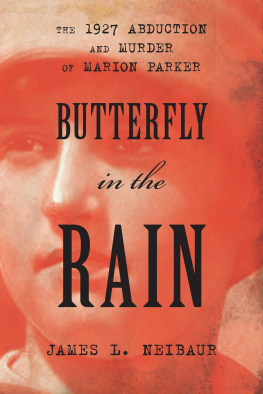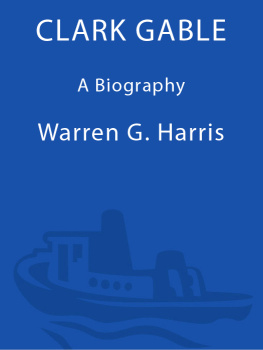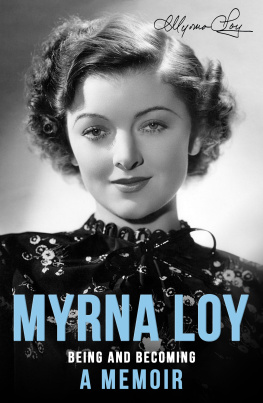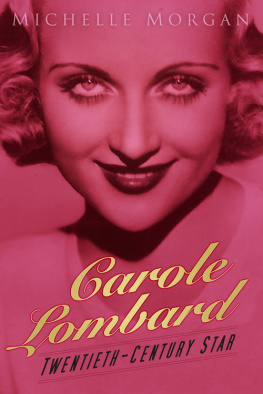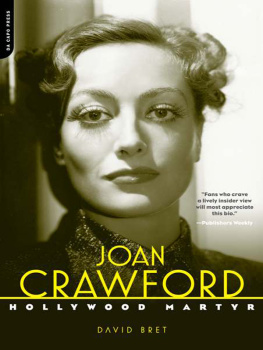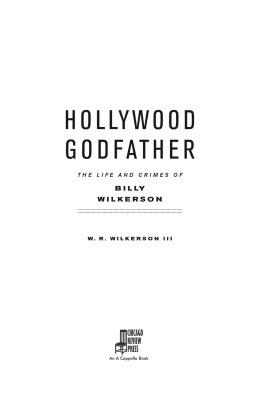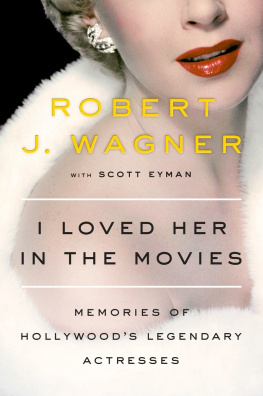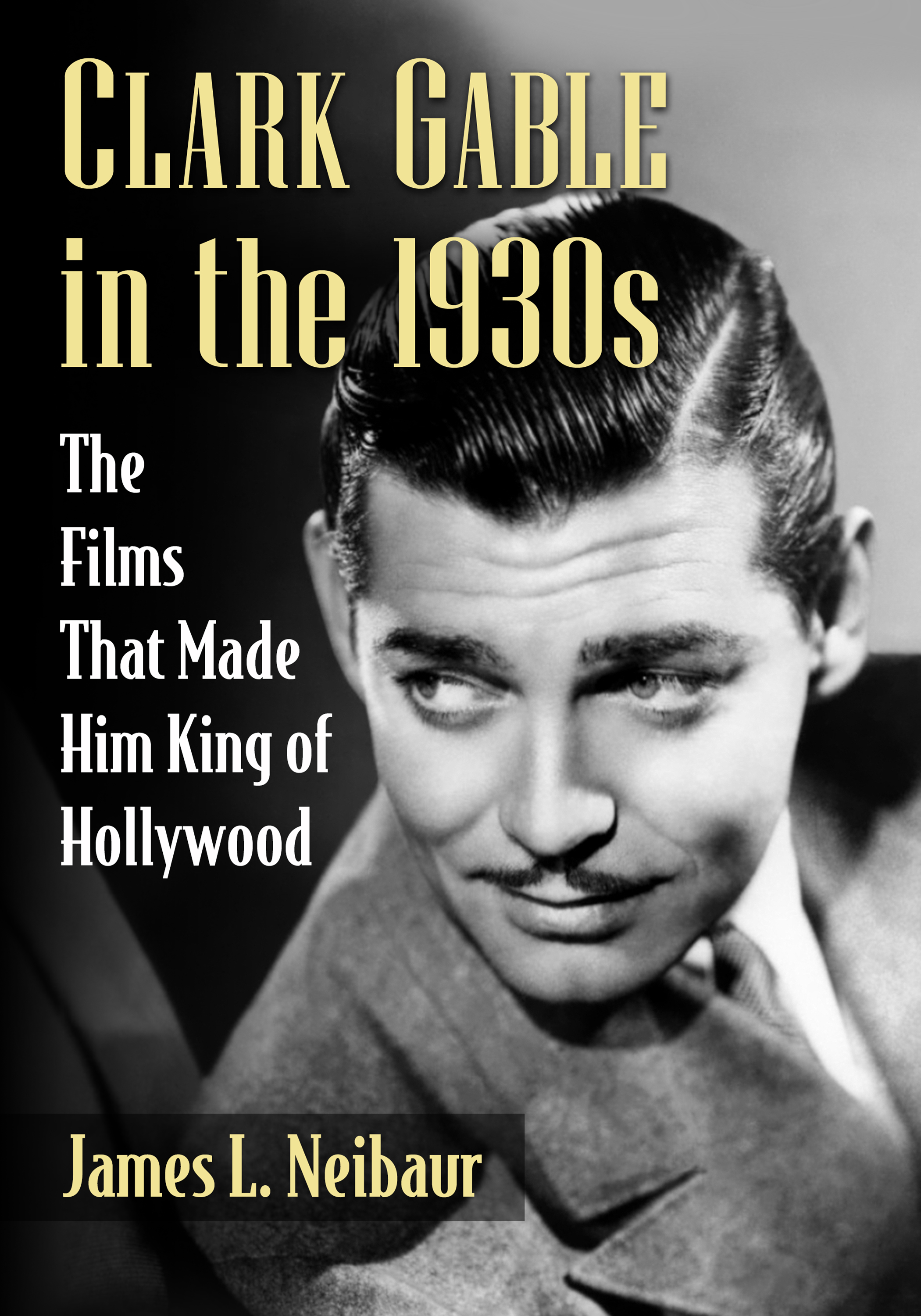Clark Gable in the 1930s
Also by James L. Neibaur
The Jean Harlow Films (2019)
The Hal Roach Comedy Shorts of Thelma Todd, ZaSu Pitts and Patsy Kelly (2019)
The Andy Clyde Columbia Comedies (2018)
The W.C. Fields Films (2017)
Chaplin at Essanay: A Film Artist in Transition, 19151916 (2008)
Arbuckle and Keaton: Their 14 Film Collaborations (2007)
The Bob Hope Films (2005)
The RKO Features: A Complete Filmography of the Feature Films Released or Produced by RKO Radio Pictures, 19291960 (1994; paperback 2005)
by James L. Neibaur and Gary Schneeberger
Frank Sinatra on the Big Screen: The Singer as Actor and Filmmaker (2021)
by James L. Neibaur and Ted Okuda
The Jerry Lewis Films: An Analytical Filmography of the Innovative Comic (1994; paperback 2013)
by Ted Okuda and James L. Neibaur
Stan Without Ollie: The Stan Laurel Solo Films, 19171927 (2012)
all from McFarland
Clark Gable in the 1930s
The Films That Made Him King of Hollywood
James L. Neibaur

McFarland & Company, Inc., Publishers
Jefferson, North Carolina
ISBN (print) 978-1-4766-8044-6
ISBN (ebook) 978-1-4766-4168-3
Library of Congress and British Library cataloguing data are available
Library of Congress Control Number 2021011603
2021 James L. Neibaur. All rights reserved
No part of this book may be reproduced or transmitted in any form or by any means, electronic or mechanical, including photocopying or recording, or by any information storage and retrieval system, without permission in writing from the publisher.
Front cover: Clark Gable circa 1936
Printed in the United States of America
McFarland & Company, Inc., Publishers
Box 611, Jefferson, North Carolina 28640
www.mcfarlandpub.com
To the memory of my grandfather John Rizzo, who pointed out Clark Gable to me when I was a small child, while we were watching the It Happened One Night hitchhike scene on television. It was the first time I had heard the name or had seen him, and I was intrigued by this actor who had something called charisma. It was a special experience to have been introduced to this movie icon through family.
Thanks, Grandpa.
Acknowledgments
First and foremost, my thanks to my dear writing assistant Katie Carter, who has now been with me for about a dozen or so books. She truly lives every book with me, screening the films and offering valuable insights and observations, while also catching my errors. I wish I had her working with me from the very beginning, but she wasnt even born when I wrote my first two books!
Thanks also to John Gallagher. He shared with me his research on William Wellman, Loretta Young and Tay Garnett, which helped this project greatly.
Thanks to Peter Jackel, a friend for over 50 years, who allowed me to borrow freely from his massive DVD library so I could screen all the Gable movies I didnt already own myself.
Thanks also to Terri Lynch, Ted Okuda, Kelly Parmelee, Allie Schulz, Lea Stans, Kim Morgan, Farran Smith Nehme, Imogen Smith, Kat Ellinger, for providing encouragement and support with their work and their friendship.
Finally, to my late son Max Neibaur, who will forever inspire everything I do.
Table of Contents
Introduction
Clark Gable is one of the true icons of American cinema, and in 1937 he was rightfully named the King of Hollywood films after consistent growth as a star during the 1930s. A careful study of his work during this decade is perhaps the best way to truly understand his lasting fame. The fact that our study of his 1930s movies will conclude with his most famous film, 1939s Gone with the Wind , makes this focus even more significant.
The 1930s is one of the most important decades in American cinema, ushering in the talking picture revolution, building its style with preCode classics, and exploring escapist musicals and anarchic comedies in response to the Great Depression. The decade culminated with what many believe to be the absolute greatest year in movies, 1939, the year that gave us such lasting screen classics as The Wizard of Oz , Mr . Smith Goes to Washington , Dark Victory , Wuthering Heights , Gunga Din and, of course, Gone with the Wind .
During this decade, Clark Gable represented the quintessential Hollywood actor. Tall, attractive and charismatic, he played heavy drama and light comedy with equal aplomb. His rugged image came to represent the quintessential maletough, uncompromising, able to handle himself in any situation.
Early in his career, he was developing this image. It didnt take long, because its elements came naturally to him; they were already a part of his inherent personality. An oil rigger who found his way into theater, Gable scored in a stage performance of The Last Mile , which led to small parts in movies. There was always something about Gables presence, his distinctive voice and his affable yet mysterious manner that attracted moviegoers, even if the role was quite small. Gable always managed to resonate when on screen.
He might have landed at Warner Brothers, nestled among Hollywood tough guys like Edward G. Robinson, James Cagney, Humphrey Bogart and George Raft. But he ended up at the glossy Metro-Goldwyn-Mayer studios, considered the major production company of the time. Right away he connected on-screen playing opposite the likes of Wallace Beery, Jean Harlow, Joan Crawford, Norma Shearer and Lionel Barrymore. By 1932, he was one of the biggest stars in Hollywood, and a film was already sold to exhibitors just because he was in it. Then in 1934, when his studio loaned him to the small studio Columbia Pictures as punishment, the result was It Happened One Night , one of the finest films of all time. Winning Academy Awards in every major category, It Happened One Night ensured that movie stardom would continue for Gable.
In this book I will explore every one of Gables 1930s movies, assessing each for its cinematic aesthetic. The text will discuss how well each of Gables movies from this decade has held up over time and will provide as much background info that our research will allow. The goal is to have a book-length study that both investigates and celebrates Gables timeless impact on movies of the 1930s.
Things didnt always work out. Sometimes Gable attempted roles that didnt jibe with his established screen persona. And although as an actor he was accepting of the challenge, his audience wasnt ready to accept him too far outside the norm. But we will discuss just why a historical drama like Parnell flopped, and how it almost cost him his biggest role, that of Rhett Butler in Gone with the Wind .
We will also see how his very early films, before he was a big star, also venture outside the screen persona he eventually established, which makes it interesting to reflect on those films knowing the type of roles in which he would later excel.
Gable remained active until his death, which occurred 12 days after completing his last film. Despite his life being shattered by the untimely death of his wife Carole Lombard in a 1942 plane crash, he had persevered. Even though he was no longer King of Hollywood, he continued to appear in good films like The Hucksters , Command Decision , Teachers Pet and The Misfits . There will be a concluding chapter discussing these later films, but the body of the text will concern itself with each of the films Gable made in the 1930s, when he was at the height of his powers and did his best work.




